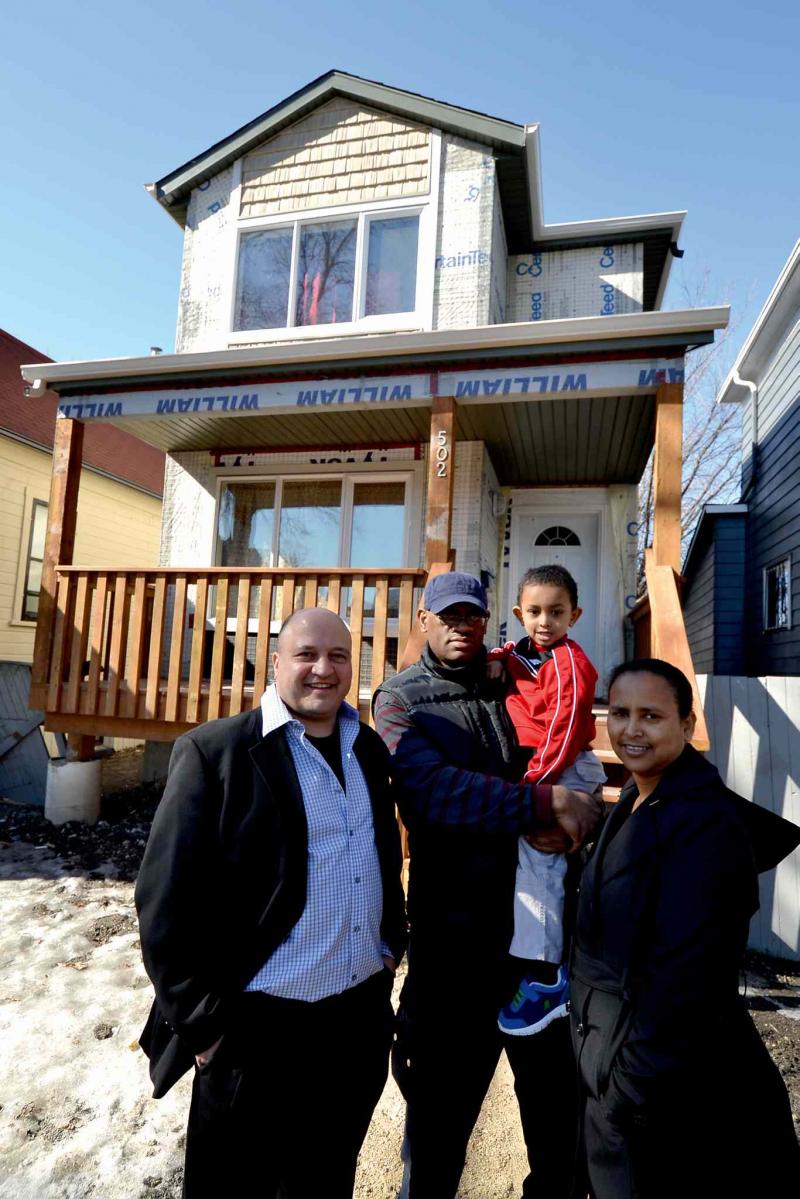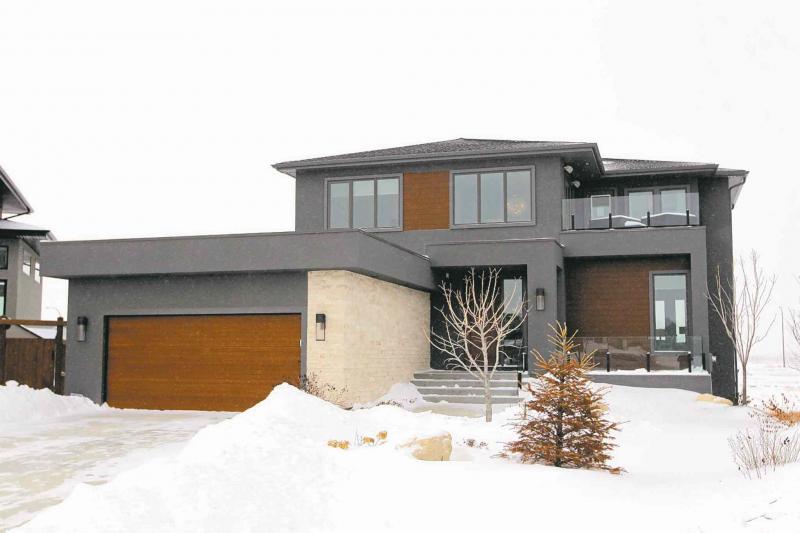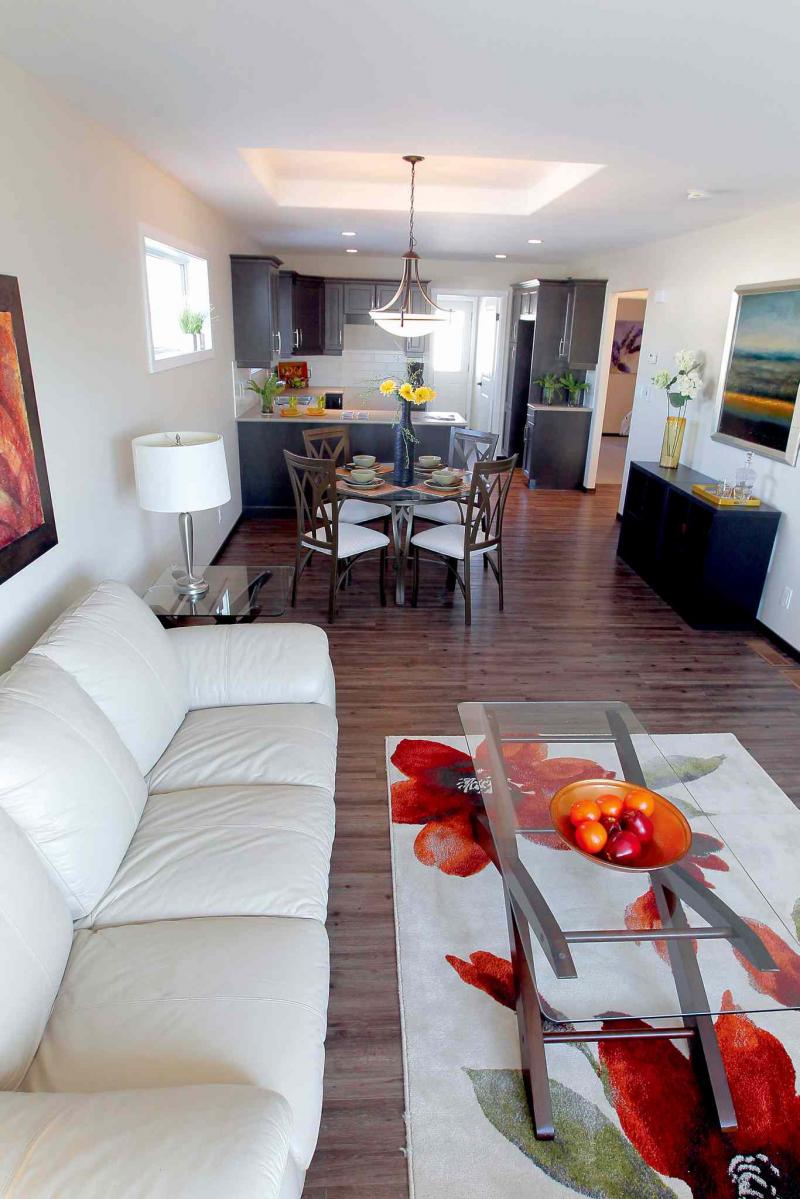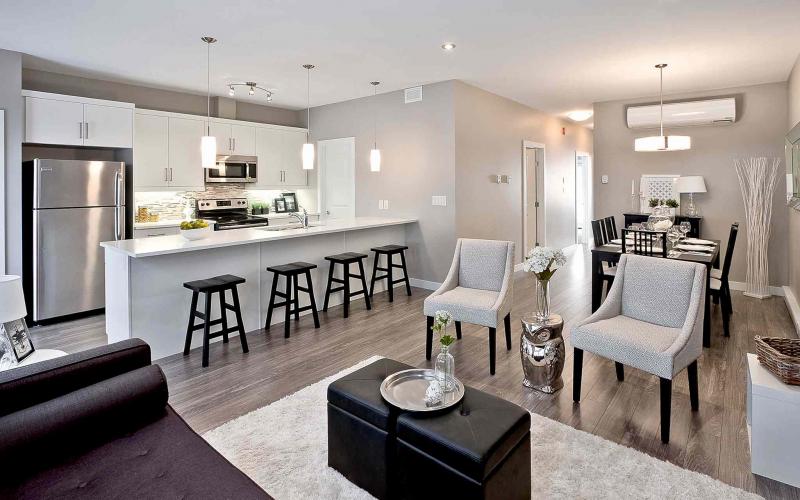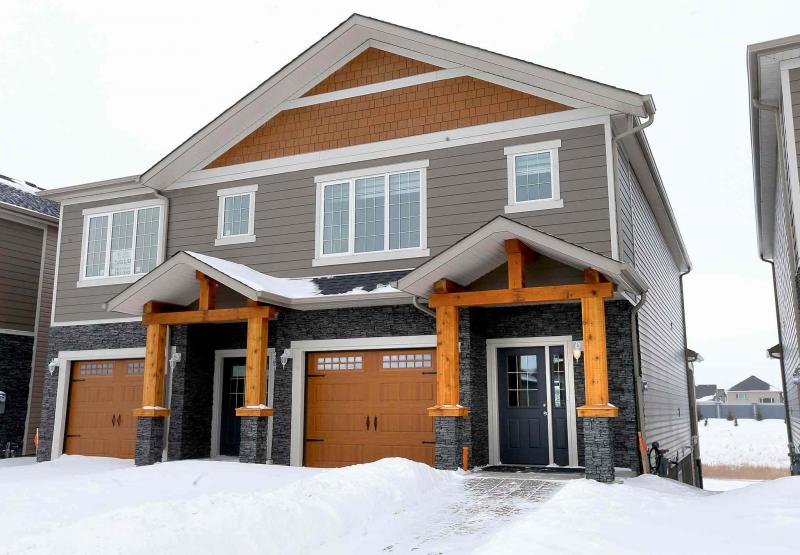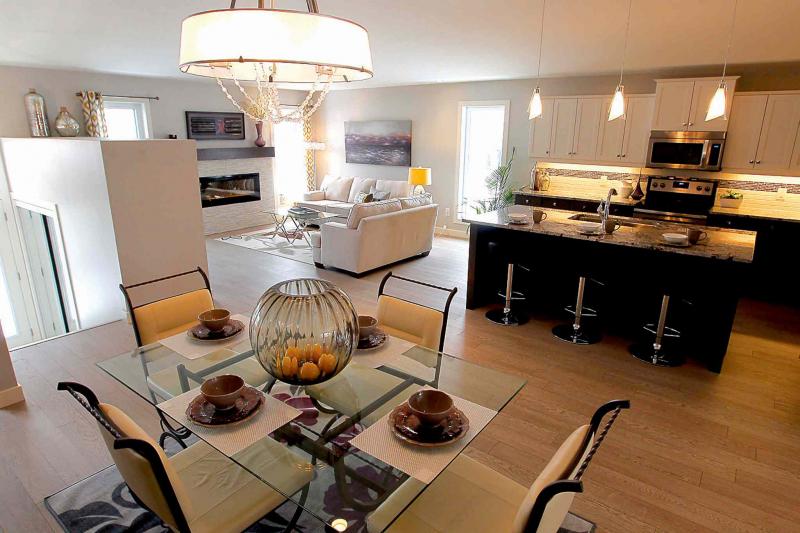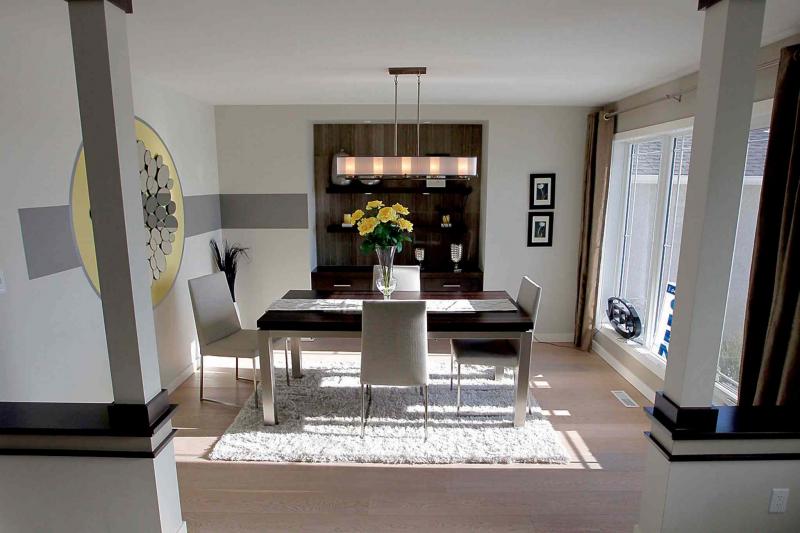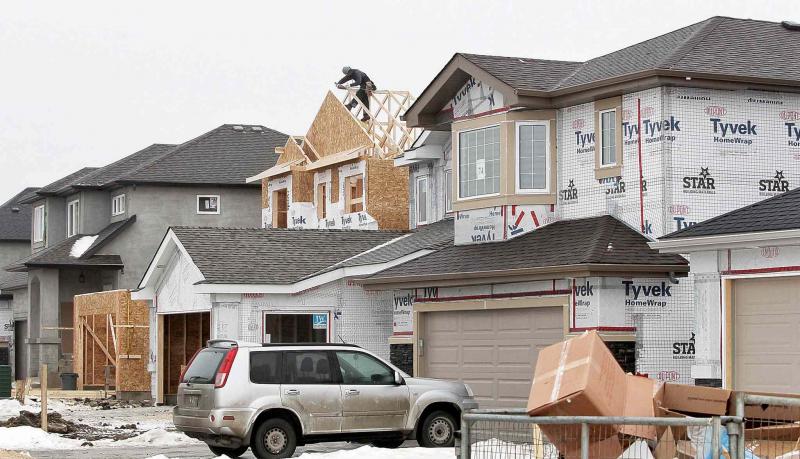New Homes
New Homes
Closed concept
As a home builder, it can be difficult to be daringly different with home designs.
Why? Because the homebuilding industry is driven by trends that include open-concept great rooms. Most homes on the market today, for better or for worse, are centred around wide-open great rooms.
Thankfully, there's the occasional design that dares to be different. Phil Mosher, a sales representative with Maric Homes, said 43 Borealis Bay is one such home.
"This is a really neat home," he said. "Each space is defined, yet you're not walled in, by any stretch of the imagination. It's a home with a layout that gives you the best of both worlds -- definition and excellent flow between spaces. I've been in the real estate business for over 20 years, and this is one of the best, most innovative designs I've seen."
The key to the design of 43 Borealis is Maric's design team thought outside the box.
Case in point is the home's hub, a.k.a. the great room. Whereas most great rooms might be divided up into three areas, the great room in 43 Borealis is divided neatly into five distinct areas: a computer nook off the kitchen, the island kitchen itself, an informal dining area, a living room and a library.
"There's a designated area for everything -- the study area, island kitchen and (huge) informal dining area are all distinct spaces, but open onto each other for easy access," said Mosher. "At the same time, there's lots of light. The computer nook is next to two windows and patio doors that lead to a covered deck, and the dining area has three large windows behind it."
Instead of being open to each other, the kitchen/dining area and family room are neatly separated by a gorgeous, maple-trimmed (beige) tile wall that houses a TV and three-sided fireplace; entrances on either side provide seamless access to the family room and library.
Like the kitchen, the family room's rear wall is filled with a glass, making for a bright space that's also privy to a wetland view.
"Every space is filled with light, and the attention to detail is absolutely incredible," Mosher said. "I love the movable TV niche, which allows you to rotate the TV to face either the kitchen or family room -- it's a neat feature that allows you to watch TV no matter where you are in the great room."
He added the finishing materials are also second to none.
"As is always the case with Maric designs, the woodwork is just gorgeous -- the baseboards, door trim, window sills and doors," Mosher said. "More than that, the other materials -- taupe (heated) tile floor in the kitchen (and foyer), cream quartz countertops, brown cabinets (with white cabinets above the stove for contrast) and taupe tile backsplash -- make for a rich, warm interior feel that goes through every space."
Flow from the family room into the library -- which is smartly separated from the family room by three stylish pillars and features walls lined with rich maple shelving -- and into the foyer is seamless.
For added convenience, a large mudroom/laundry room and handy powder room are placed to the left of the foyer.
"The layout is as the same quality as the home's finishing quality," said Mosher. "Everything is exactly where it should be."
Meanwhile, heading upstairs is a pleasure thanks to a beautiful maple staircase with tempered-glass inserts; light flows freely through the glass, while the stain and routered details on the railing are something to behold.
The same could be said for the upper level, which is laid out around a T-shaped landing.
"One of the first things you notice is all the light that pours in from two windows set up high over the foyer," he said. "It's a super floor plan that makes the most of the available space, with one bedroom to the left of the stairwell, a four-piece bath in the centre and another big bedroom to the right."
As it should be, the upper level's final space, the solarium, is its unquestioned centrepiece.
"It's absolutely filled with light -- there are three windows on its rear wall and two windows plus patio door on its front wall; that patio door leads to your own private deck. The bedroom is huge, with loads of space for a big bed and furniture, plus a sitting area next to the patio door."
The ensuite isn't too shabby either, said Mosher.
"With its tempered-glass, barn-door-style entrance, heated taupe tile floor, tempered-glass shower enclosure and a bubble jet soaker tub tucked away neatly to the rear of the ensuite in a tile niche with maple trim, it's a space made for relaxation," he said.
Relaxation is also the theme downstairs in the walkout basement. Like the main floor, it's bright, warm and neatly segmented. On one side is a games area, play area and media area bathed in light from three windows; on the other is an exercise room off a brief hallway that also contains a four-piece bath and a huge, fourth bedroom with walk-in closet.
"Add in the lower level, and you have a beautiful, functional home that offers over 3,500 square feet of total living space," Mosher said. "Maric really knocked it out of the park with this design, from top to bottom."
lewys@mts.net
New Homes
Trends in construction industry could be hitting home soon
Every day, I receive selected articles from across the country about issues that affect the residential construction industry. These can involve a multitude of topics ranging from government legislation to research studies to local issues. This past week, I noticed a few issues or trends occurring around the country that just might come into play here over time.
The University of Waterloo recently hosted a forum where a panel of experts raised a number of housing concerns. It seems as though they are facing a vicious circle of similar issues. Millennials tend to be the most interested in living in the heart of the city, close to public transit. However, in larger cities such as Toronto, downtown real estate is frequently the most expensive. Young families don't want to raise their children in small downtown condos but also don't want to commute daily for over an hour each way in order to own a single-family home. However, they can't build just outside existing municipal borders closer to their desired work location because of Ontario land use and intensification policy regarding the greenbelt area.
An interesting sidelight to the transportation issue, recently a 42-storey tower in Toronto became the first such building in Canada to be built without a parking garage.
Other communities have responded to the need for more affordable housing in innovative ways. Vancouver waives development fees and charges on affordable housing projects. Austin, Tex., encourages more affordable housing on foreclosed properties. In Saskatoon, one builder is pursuing garage and garden suites as an infill project for back-lane neighbourhoods, primarily in the older core area of the city.
In Edmonton, they are making concerted efforts to densify older neighbourhoods. This may take the form of subdividing larger lots into two smaller lots or building multi-family residences on sites where single-family detached once existed.
British Columbia, Alberta and Ontario have all supported six-storey, wood frame, multi-family units in an effort to create safe, more affordable mid-rise housing. Saskatchewan is currently considering this option.
Due to the sudden and significant drop in oil prices, concern has been raised about home sales, production and prices. Jobs may also be at risk. Look for a possible return of some of the skilled labour and youth that left Manitoba recently to return home to live.
Mike Moore is president of the Manitoba Homebuilders' Association.

